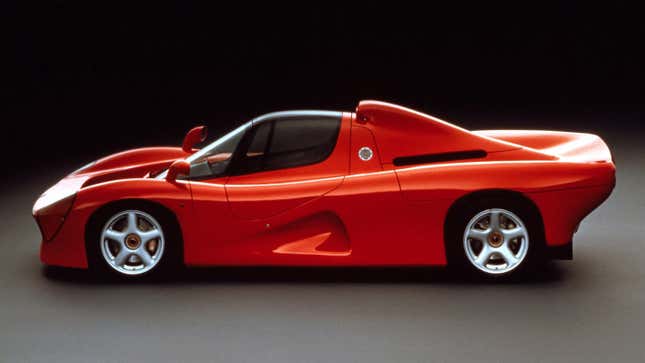
The clever minds at Yamaha don’t always get the credit they deserve for developing some pretty rad car engines over the years. A fair deal of them were built for, and in collaboration with, Toyota, including the 2ZZ-GE, the 3S-GE and the stratospheric-revving 4.8-liter V10 in the Lexus LFA, though the company has contributed to vehicles from other marques as well.
Expect that to continue into the electric era, as Yamaha has just announced a new compact 350 kW (469 horsepower) electric motor specifically targeted at “hyper EVs.” The space-conscious packaging makes it ideal for multi-motor applications on performance cars, and Yamaha says it was able to achieve the compact design by combining the inverter and gear in one unit.

This motor isn’t something Yamaha is eyeing only for vehicles you’ll never be able to afford. The company has also been commissioned — since last year — to develop lower-power hardware for more modest EVs. So, yeah, Yamaha is still doing what it does best.
That’s all well and good, but I think Yamaha’s been letting other brands steal the accolades for far too long. Instead, it should illustrate the optimal use of this new technology in a wild, no-limits prototype — just like it did 30 years ago.

This was the Yamaha OX99-11. Created in 1992 with an eye toward production in the middle of the decade, the OX99-11 bridged Yamaha’s Formula 1 engine development business with the supercar realm. But because it was a product of Japan in the shadow of the bubble economy, Yamaha wasn’t satisfied stuffing its V12 into a cookie-cutter coupe. Instead, it crafted a delightfully strange shell to house all its engineering prowess.
The OX99-11 utilized the same 3.5-liter V12 that appeared in Brabham and Jordan cars at the time — only detuned to 400 HP — built atop what was essentially the same carbon-fiber chassis underpinning F1 cars of the day. The result looked like a softened Group C prototype, with a narrow jet fighter-like canopy arching over the cockpit and a quirky front wing integrated upside down into the nose. It tipped the scales at 2,535 pounds — about 30 pounds heavier than a McLaren F1.

Things got even weirder inside that canopy, due to Yamaha’s chosen seating arrangement. Yes, “arrangement” is the appropriate word here, because there’s actually a passenger seat positioned behind the driver’s, a tandem placement. I’m not sure who would actually want to sit back there, though, given the nonexistent legroom and the fact that the headrest is quite literally affixed to the bulkhead separating the engine and cabin.
The result was an especially weird supercar during an era known best for weird supercars, and much like its peers, it didn’t see production. Yamaha had contracted U.K.-based International Automotive Design to head up the project, but the two entities struggled to collaborate so they ultimately split. Yamaha then threw the OX99-11 over to its Ypsilon Technology division, which also oversaw F1 engine development, to finish the car in a half-year. That proved difficult, and the Japanese economy — by now in recession — didn’t help things. The OX99-11 was shelved by 1994.

But not before three prototypes were made. And despite the unceremonious end to what could have been a glorious statement of intent for the company, the failure of the OX99-11 program never deterred Yamaha from flirting with the dream of car production in the decades that followed.
In 2015, Yamaha teased us again with the Sports Ride concept. Incorporating a chassis designed by Gordon Murray Automotive and a nose that bore a strong resemblance to those on a few Toyotas, the Sports Ride was another stripped-down machine for purists that also, regrettably, didn’t progress beyond the prototype stage.
So this is a bit of a theme for Yamaha. With the recent news, we at least know the company will continue to bestow its know-how on sports cars that don’t bear its name. Thought that won’t stop us from marveling at the what-ifs.